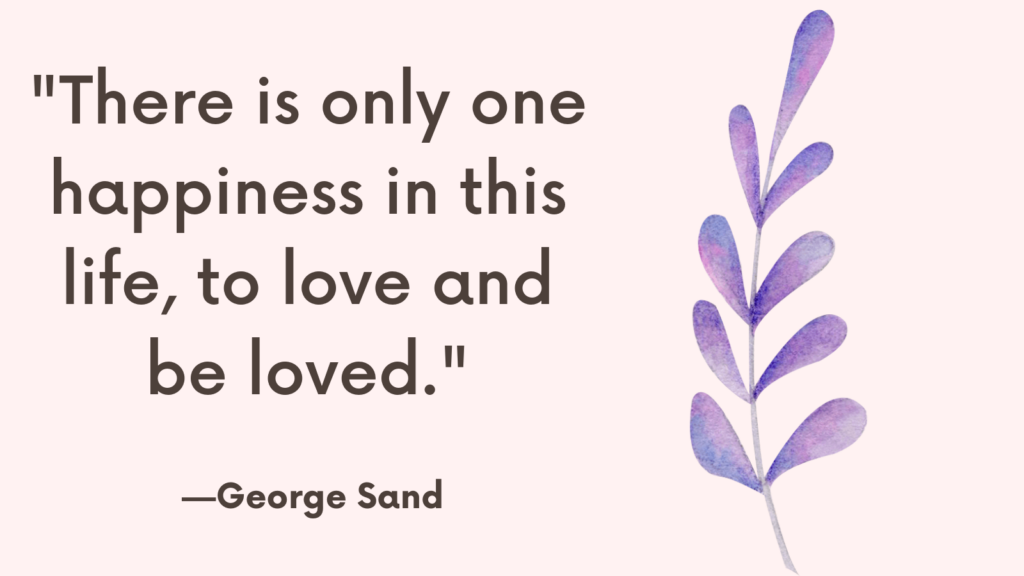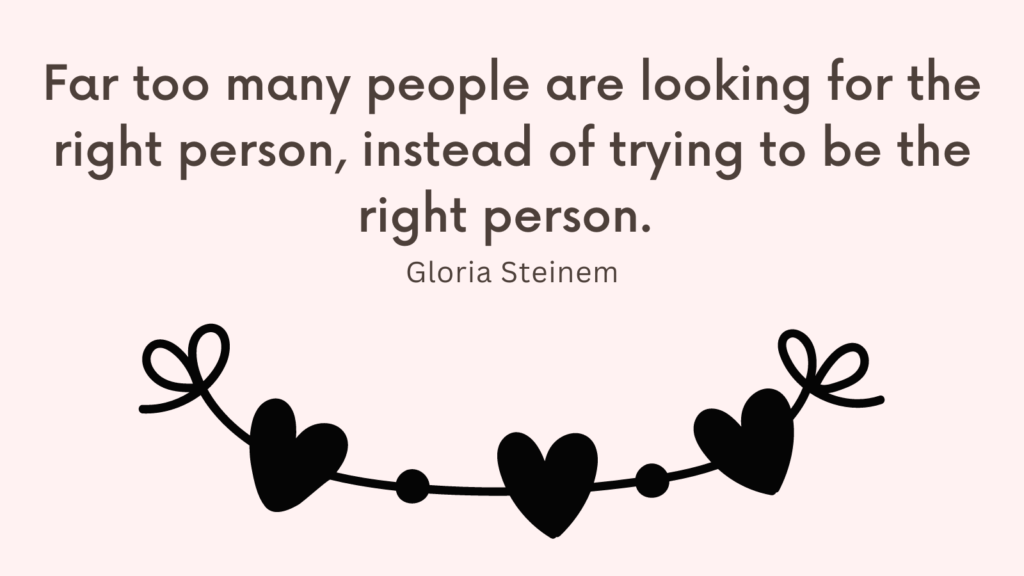In this post, you’re going to learn how to stop being the pursuer in a relationship.
What Is The Pursuer-Distancer Dynamic?
The Pursuer-Distancer Dynamic is a common pattern that occurs in many relationships, where one partner (the Pursuer) seeks more closeness and intimacy, while the other partner (the Distancer) seeks more independence and space.
This dynamic can lead to a cycle of interaction that exacerbates feelings of dissatisfaction and misunderstanding on both sides, often escalating conflicts and emotional disconnection.
Characteristics of the Pursuer-Distancer Dynamic
Pursuers often feel that they are not getting enough attention, affection, or emotional support from their partners.
They may respond by seeking more interaction, communication, and closeness, which can come across as needy or demanding to their partner.
Distancers, on the other hand, value autonomy and may feel overwhelmed or suffocated by their partner’s needs for closeness.
They may respond by withdrawing, seeking solitude, or engaging in activities alone, which can be interpreted as rejection or disinterest by their partner.
Related: 10 Steps To End Fearful Avoidant Chase
Examples of the Pursuer-Distancer Dynamic
The Pursuer-Distancer dynamic can manifest in various ways across different aspects of a relationship, from everyday interactions to handling stress and conflict.
Here are some examples to illustrate how this dynamic can play out:
Example 1: Emotional Support
– Pursuer: After a stressful day at work, Alex seeks comfort and wants to talk about their feelings in detail, hoping for empathy and validation from their partner, Jordan.
– Distancer: Jordan, feeling overwhelmed by their own stress, prefers to unwind alone and views Alex’s need for immediate emotional support as demanding. Instead of engaging, Jordan withdraws, focusing on solitary activities like reading or watching TV.
Consequence: Alex feels neglected and unloved, believing their emotional needs are unimportant to Jordan. Jordan, on the other hand, feels unfairly pressured to provide support when they themselves are in need of space, leading to frustration and resentment.
Example 2: Social Activities
– Pursuer: Jamie, who thrives on social interaction, frequently suggests going out with friends or attending social events as a couple.
– Distancer: Taylor, who values quiet time and personal space, often declines these invitations, preferring to stay in and recharge alone.
Consequence: Jamie interprets Taylor’s reluctance as a lack of interest in spending time together, leading to feelings of loneliness and rejection. Taylor feels misunderstood and pressured, causing them to withdraw further.
Related: Top 10 Tips for Healing Fearful Avoidant Attachment
Example 3: Decision Making
– Pursuer: In planning a holiday, Sam is enthusiastic and wants to discuss every detail with their partner, Lee, seeking their input and agreement to ensure they make decisions together.
– Distancer: Lee feels stressed by the constant discussions and pressure to make decisions, preferring to keep things flexible and not be bogged down by details. Lee pulls back, avoiding conversations about the trip.
Consequence: Sam feels that Lee doesn’t value their efforts to plan a perfect holiday together or care about their mutual experiences, leading to disappointment and resentment. Lee, feeling cornered and overwhelmed, becomes even more reluctant to engage.
Example 4: Physical Affection
– Pursuer: Chris loves to express affection through physical touch, such as cuddling, holding hands, and frequent hugs.
– Distancer: Pat, while loving Chris, finds too much physical closeness to be claustrophobic and prefers more personal space, especially in public.
Consequence: Chris feels rejected and unloved, interpreting Pat’s need for space as a sign of diminished affection. Pat, on the other hand, feels guilty but suffocated, struggling to balance their need for space with Chris’s need for closeness.
Related: What Happens When You Stop Chasing An Avoidant?
Example 5: Communication Frequency
– Pursuer: Dana expects frequent check-ins throughout the day via text or calls, seeing it as a way to stay connected and express care.
– Distancer: Alex finds constant communication to be overwhelming and a distraction from work or personal time, preferring to connect at the end of the day.
Consequence: Dana feels ignored and worries about the strength of their connection, while Alex feels monitored and pressured to respond, leading to irritation and a desire to withdraw further.
Related: Dismissive Avoidant vs. Fearful Avoidant
How To Stop Being The Pursuer In A Relationship?
Shifting away from the role of the pursuer in a relationship requires introspection, patience, and a conscious effort to modify your behaviors and expectations.
Here are strategies to help you stop being the pursuer and work towards a more balanced dynamic:
1. Understand Your Behavior
Reflect on the reasons behind your pursuing behavior.
Often, it stems from underlying fears or insecurities, such as fear of abandonment or feelings of unworthiness.
Understanding these motivations can help you address the root causes.
2. Foster Self-Sufficiency
Work on building your independence and self-sufficiency.
Engage in activities that you enjoy and that fulfill you outside of your relationship.
Cultivating your hobbies, interests, and friendships can reduce the pressure on your partner to meet all your emotional needs.
Related: Top 9 Avoidant Attachment Triggers (+7 Tips On Overcoming Avoidant Attachment Style)
3. Improve Self-Esteem
Low self-esteem can drive pursuing behavior as you seek validation and reassurance from your partner.
Focus on activities and practices that boost your self-worth, such as positive affirmations, self-care, and setting personal goals.
4. Communicate Your Needs Clearly
Instead of seeking constant reassurance or closeness, try communicating your needs and desires more clearly to your partner.
Use “I” statements to express how you feel and what you need without blaming or pressuring them.
5. Practice Patience
Changing dynamics in a relationship takes time.
Be patient with yourself and your partner as you both adjust to new ways of interacting.
Recognize that immediate responses or changes may not happen and that’s okay.
Related: Relationship Expectations: Realistic vs. Unrealistic Expectations
6. Learn to Tolerate Discomfort
The fear of rejection or abandonment can make it challenging to stop pursuing behavior.
Learning to tolerate the discomfort that comes with uncertainty or not having your needs met immediately can help you become more resilient and less reactive.
7. Set Healthy Boundaries
Identify and communicate your boundaries clearly to your partner.
Setting healthy boundaries is essential for mutual respect and understanding in the relationship.
8. Focus on Emotional Self-Regulation
Develop skills for managing your emotions independently.
Techniques like mindfulness, deep breathing, and meditation can help you stay centered and reduce the impulse to seek constant validation or reassurance from your partner.
Related: Best 10 Books On Healing Anxious Attachment
9. Reevaluate the Relationship
Sometimes, pursuing behavior is a response to a genuine lack of emotional connection or responsiveness from your partner. Assess whether the relationship is meeting your needs and consider if it’s healthy and balanced.

Conclusion
Stopping being the pursuer in a relationship is about finding a balance between your needs and those of your partner.
It involves working on your self-esteem, communicating effectively, and ensuring that the relationship is mutually satisfying and supportive.
Remember, both partners play a role in establishing the relationship’s dynamics, and open, honest communication is key to finding a healthy balance.



